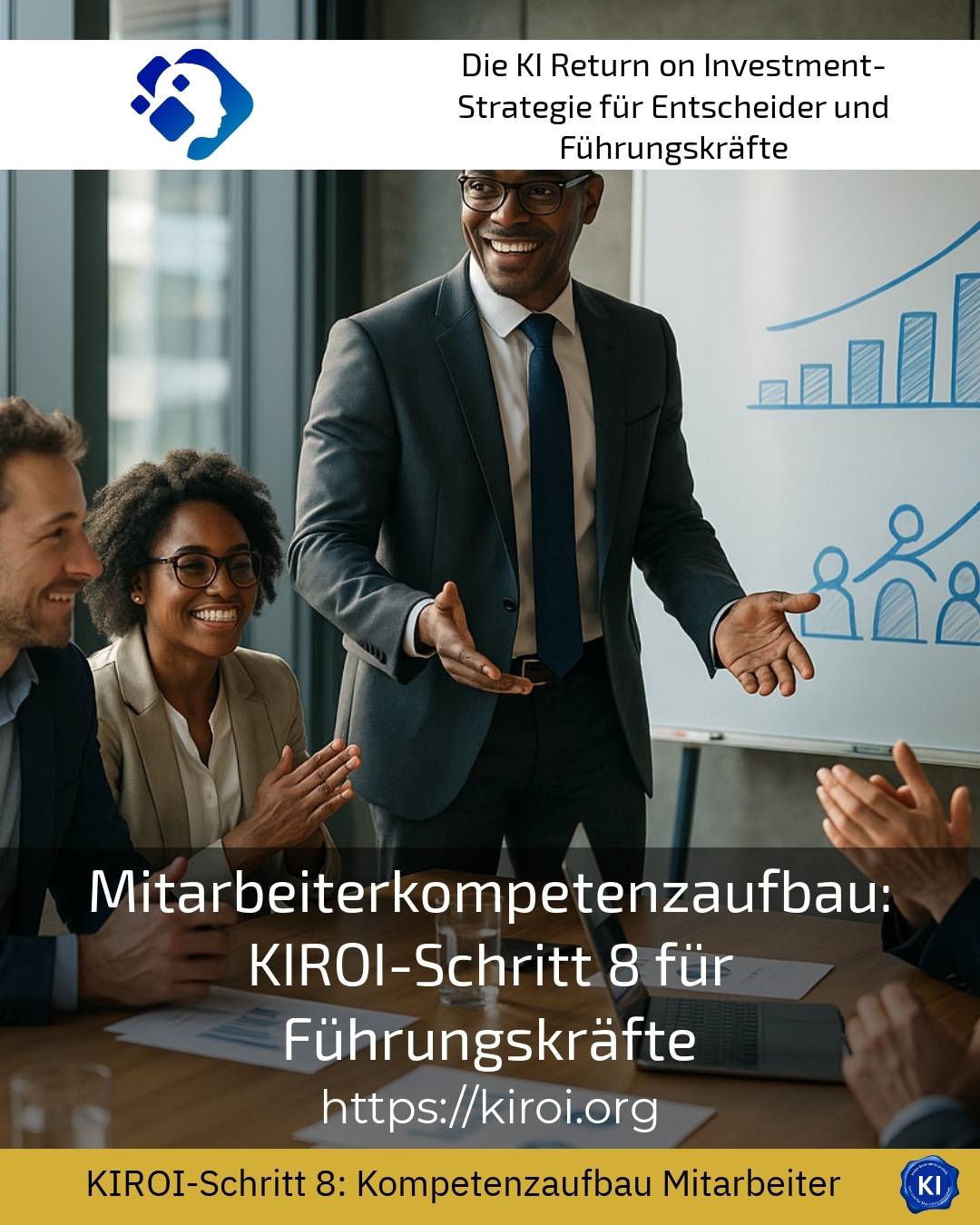The targeted development of employee competences is a decisive factor for successful leadership and long-term corporate success. Managers in particular are faced with the challenge of continuously developing their teams and building competences in a sustainable manner. KIROI Step 8 offers practice-orientated support that has been proven to help employees adapt optimally to changing requirements.
Focus on building employee expertise: KIROI Step 8 as valuable support
The eighth step in the KIROI model is aimed specifically at managers who wish to fulfil their role as process facilitators for employee competence development. This is not just about traditional training, but above all about individual support, practical learning and the sustainable anchoring of new skills in everyday working life. In their day-to-day management work, many companies rely on versatile methods that support the development of expertise in real projects and tasks.
Examples from various industries illustrate the diversity: in the technology sector, teams often benefit from on-the-job training and job rotations, which open up a wide range of experiences for employees. In the service sector, workshops on communication and conflict management are effective. And in the production sector, skills development is often achieved through targeted coaching and case studies that simulate practical problems and practise solutions.
Managers actively support this process by agreeing individual development plans with their employees and thus awakening intrinsic motivation. This direct dialogue and the opportunity to reflect on successes together significantly promote the sustainability of employee skills development.
Strategic building blocks for employee competence development in the KIROI context
The development of competences requires a structured approach, which is systematically addressed in KIROI step 8. After a thorough needs analysis, it is important to define individual development goals that are closely aligned with the company's objectives. The variety of tools ranges from formal training courses and informal peer learning formats to digital learning solutions such as e-learning and microlearning.
Practical methods such as action learning or project work promote learning in real-life situations. By working on concrete challenges, employees expand their skills and at the same time gain self-confidence and problem-solving expertise.
BEST PRACTICE with one customer (name hidden due to NDA contract) In a medium-sized company, employee skills development was implemented through targeted job rotation and accompanying mentoring. Through regular coaching sessions, managers ensured that employees were able to apply their newly acquired knowledge directly. This led to improved interdisciplinary cooperation and a noticeable increase in innovative ability.
The manager is explicitly used as a source of inspiration and support - not as the sole source of knowledge. This creates a culture of learning that is characterised by mutual trust and openness.
Practical tips for managers on building employee competences
Managers are advised to pay attention to the following aspects in order to successfully develop employee competences:
- Focus on personalised development planning that builds on the strengths and potential of each individual.
- Encourage exchanges between employees through peer learning and peer counselling.
- Use modern digital learning formats to impart knowledge flexibly and obtain feedback promptly.
- Anchor learning impulses in everyday working life, for example by reflecting on routine activities and discussing challenges together.
- Create a constructive feedback culture that encourages employees to share their own experiences and learning progress.
To illustrate: in the IT sector, managers often report that regular project reviews and retrospectives not only ensure an increase in technical expertise, but also strengthen team dynamics and motivation. In retail, targeted sales workshops combined with e-learning modules provide targeted support for skills development. And in the healthcare sector, practice-orientated case studies with subsequent reflection by external coaches are highly valued.
Shaping employee competence development sustainably: The added value of KIROI Step 8
The development of employee competences is accompanied by KIROI Step 8 in order to provide managers with a practical tool that supports and systematically promotes the learning process of their teams. It is important to understand the competences developed not as a one-off investment, but as an ongoing development process. This not only allows individual potential to be realised, but also strengthens the adaptability of the entire company.
BEST PRACTICE with one customer (name hidden due to NDA contract) A blended learning programme for managers was introduced in a large service company. Combined with individual coaching sessions, structured feedback rounds and an accompanying mentoring process, the programme measurably improved employee competence development. The managers reported a better understanding of their role as development facilitators and stronger teams.
Old patterns are thus broken and managers benefit from clear orientation through transparent objectives and customised training modules.
My analysis
Developing employee competences is a key to making companies competitive in the long term. KIROI Step 8 supports managers in consciously and effectively fulfilling their role as facilitators in the learning process. The combination of individual development plans, practical learning formats and constructive feedback creates a learning culture that enables teams to master challenges flexibly. The diverse examples from technology, services and production show that holistic support in this process not only builds on knowledge, but also promotes actual application and reflection.
Further links from the text above:
Skills development: definition + successful examples
Leadership development: How to develop strong leaders
Successful skills development: 9 tips and 3 methods
Leadership Development: Concept & Methods | CLEVIS
Employee development: 4 tips for building skills in a team
For more information and if you have any questions, please contact Contact us or read more blog posts on the topic Artificial intelligence here.















